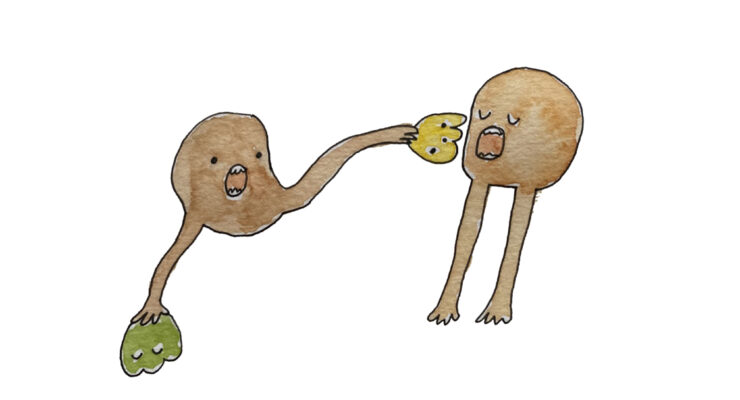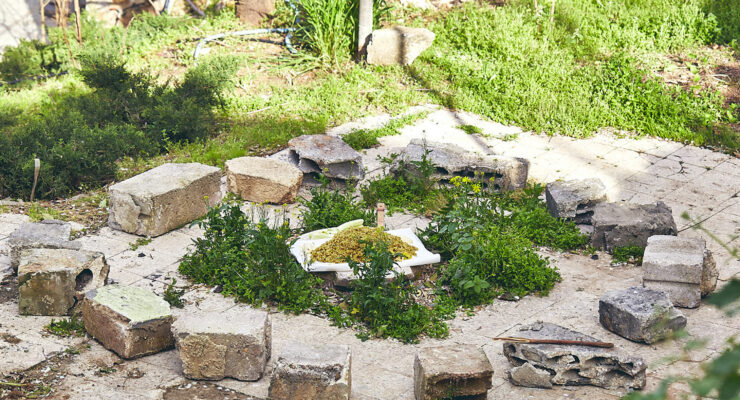Eat Ting
Our Food & Culture correspondent Hannerie Visser is based in Cape Town and works all over the African continent. She interviewed Mpho Tshukudu for us, a South African dietician and local food activist, who is also the co-author of 'Eat Ting', a book for South Africans on how to make healthy dishes with local ingredients.
You often use the term familial food fondness. What does it mean?
In one sentence, family and culture influence our notions of delicious and comfort food. Chocolate does not work for everyone.
Family means love, belonging and attachment. Most families have food rituals, recipes and comfort foods, even if they are not overtly identified as such. Our personal and social identities are formed through food production, preparation and consumption. What makes good food good in terms of taste, healthy, ethical and authentic differs culturally and personally. Food is much more than just energy for our bodies. It represents our heritage, family and friends, weddings, funerals and cultural practices.
In my work as a dietitian, I help clients to use food to prevent, treat or manage their health conditions. The popular definition of healthy is very narrow and Euro-centric, implying that other culture’s foods are not as healthy. Popular media presents quinoa, blueberries and matcha as a standard for healthy. These ideas are what dietitians are trained to see as healthy, too. When I studied to become a nutritionist many years ago, the focus was not education on cultural competency or on the inclusion of diverse cultures. This method of nutrition counselling, which is still the norm, did not feel right to me.
My clients would say “I know I have to stop eating fermented sorghum, offal and traditional leaves to control my blood sugar, so I had a lot this weekend for the last time. I am ready to eat a diabetic diet of broccoli, goji berries and brown rice”. Statements like these are because they never saw their food represented as healthy. They feel they have to choose between health and heritage, and no person should be forced to choose. Almost all cultures include foods we think of as staples of a healthy diet – whole grains, vegetables, fruits, legumes, nuts and seeds.
Teaching someone healthier eating is about understanding of the way patients eat daily and on special occasions, how they cook, their practices around production, preservation, preparation and serving of foods. Their cultural practices can be incorporated into the advice I give them. I show my clients that their cultural foods are healthy, organic, free-range, gluten-free and low-GI. They take pride in their heritage and achieve better results than with unfamiliar foods.
"I have adopted many mothers and grandmothers throughout the years who are teaching me about food."
My favourite part in your book Eat Ting, is your list of ‘Rules of the Grandmothers’. Do you have any specific food memory related to your grandmother(s)?
I did not spend much time with my granny. My love and understanding of food comes from my mother. When I was 6, she taught me that one could not have a meal of porridge with potatoes only, because they are both starches. I thought it is because they were both white, and I told her we could add curry spice to the potatoes to make them yellow. She laughed and sighed. I only learned later in a science class that she meant the chemical composition.
My mother made me tea from the mint from our garden to soothe my tummy ache. Now my morning ritual involves 1-2 mugs of mint tea. I learned later, in a food-chemistry class that mint eases digestion. On a deeper level, it is my connection with her. She passed away when I was 9, but I had a fair bit. Those conversations are making more sense because I understand the biological processes. I have adopted many mothers and grandmothers throughout the years who are teaching me about food.
Eat Ting by Mpho Tshukudu

Mpho Tshukudu

On a personal level, how much does your past and your culture influence the way that you eat?
[My past and my culture] has [influenced the way I eat], but I have diversified my food choices and cooking methods. I have found comfort in the kitchen from a very young age. I feel a deeper connection to nature and eat food that is not only healthy but is visually beautiful. My cooking style is simple, with an emphasis on preserving nutrition, flavour and texture. I am allergic to gluten, soya and nuts, so I prefer to make almost all my foods from scratch. I love grains and bake my own health muffins and bread.
My latest obsessions are folio and teff. When I get a new food item, I cook it the traditional way, then play with different modern recipes. I don’t have a sweet tooth and prefer tart, sour, bitter food – aged-cheese, olives, pickles and fermented grains. I ferment baobab and have a healthy obsession with herbal teas and adaptogens. I eat for good health and to make my liver smile.
Would we be able to use food to solve some of our socio-political challenges in South Africa?
Food choice is a socio-political choice. It is a vote for the kind of economy and health of the people and earth we want to see thrive. We can use food to solve unemployment, health issues, water and agricultural problems by supporting small farmers to grow their businesses. This model improves the local economy.
Small farmers who live near or among our communities are most likely to use sustainable farming practices that respect the whole farming cycle. Such farms use methods like permaculture, fewer chemicals and diversification, use less water than bigger farmers, travel less to reach the consumer, and grow local and seasonal foods that reach us fresher. Evidence shows that locally grown produce has a higher nutritional value than produce that is transported over a long distance. We also digest and absorb more nutrients from the foods grown closer to our environment.
If you had to choose a national dish for South Africa, what would it be and why?
Sourmilk. Milk forms part of most South Africans’ daily diet. Anna Trapido, my co-author and food hero, says the Southern African taste is the tart, sour fermented taste. Fermentation is a new old health trend. If you don’t like sourmilk or have moved up the social ladder, you can enjoy plain yoghurt and kefir (almost the same principle at double the price).
What is your favourite meal now as a grown-up and what was it as a child?
As a child, I liked warm custard and orange and coconut cake. I also ate all vegetables, except if mashed. Now, my favourite foods include wholegrain (whole sorghum, milet, fonio, teff, gluten free oats or brown basmati rice) with sour milk and a sprinkle of cardamom and aniseed. I am also obsessed with beans and lentils, especially colourful ones. I eat them daily; I make spreads, brownies, soups and salads.
What are your favourite local ingredients and why?
Sorghum and millet – they are gluten-free, versatile and can be used in baking, soups, salads. They freeze well. I also love baobab, it makes great sauces, and I drink fermented baobab for gut health daily. Also, green traditional leaves for smoothies or as vegetables.
And finally, what is the one healthy eating tip you always give your clients/patients?
Find a granny, and ask her what she ate in as she grew up. You will learn a lot. That is why they’re 80 and still energetic.
_

Hannerie is the founder of Studio H, an experience design studio based in South Africa, specialising in food design and food experiences for clients and brands.










